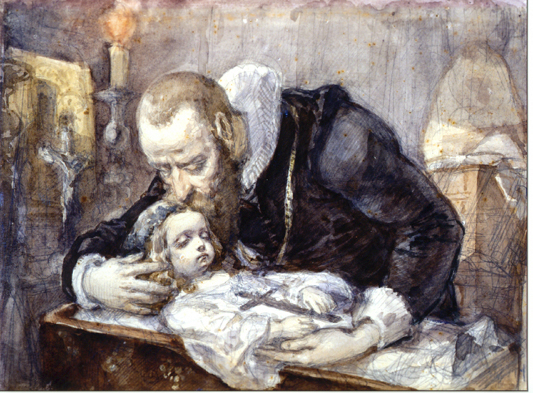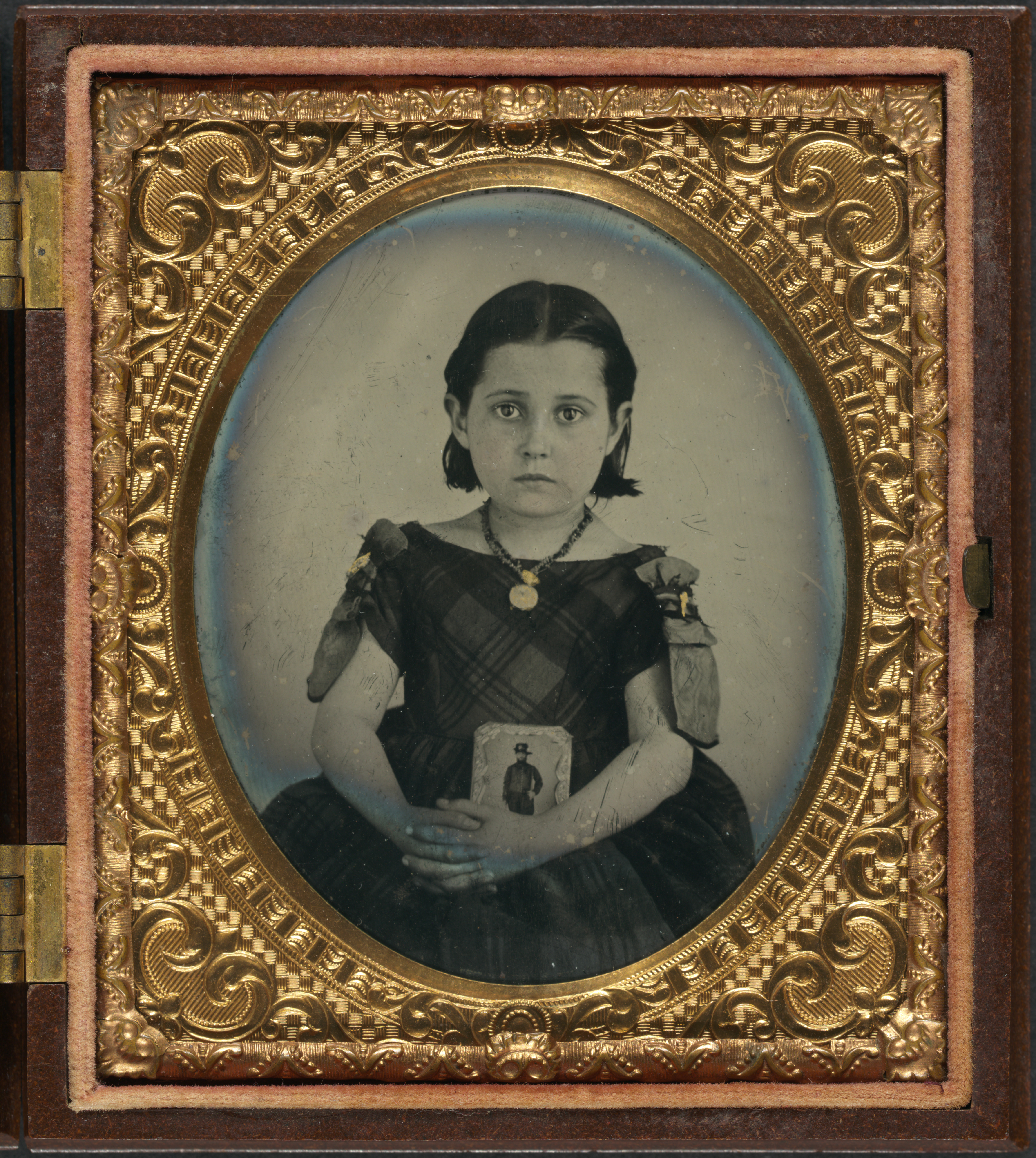|
Threnody
A threnody is a wailing ode, song, hymn or poem of mourning composed or performed as a memorial to a dead person. The term originates from the Greek word θρηνῳδία (''threnoidia''), from θρῆνος (''threnos'', "wailing") and ᾠδή (''oide'', "ode"), the latter ultimately from the Proto-Indo-European root *''h₂weyd-'' ("to sing") that is also the precursor of such words as "ode", "tragedy", "comedy", "parody", "melody" and "rhapsody". Similar terms include " dirge", " coronach", "lament" and " elegy". The '' Epitaphios Threnos'' is the lamentation chanted in the Eastern Orthodox Church on Holy Saturday. John Dryden commemorated the death of Charles II of England in the long poem '' Threnodia Augustalis'', and Ralph Waldo Emerson wrote a "Threnody" in memory of his son. Examples In written works: * John McCrae's " In Flanders Fields" * Countee Cullen's "Threnody for a Brown Girl" * Bruce Dawe's poem " Homecoming" *Ralph Waldo Emerson's "Threnody" * Peter H. ... [...More Info...] [...Related Items...] OR: [Wikipedia] [Google] [Baidu] [Amazon] |
Treny Normal
The ''Laments'' (also '' Lamentations'' or '' Threnodies''; , originally spelled ''Threny'') is a series of nineteen threnodies ( elegies) written in Polish by Jan Kochanowski and published in 1580. They are a high point of Polish Renaissance literature, and one of Kochanowski's signal achievements.Poet's Corner: "Jan Kochanowski's ''Threnodies'' ", in '' Warsaw Voice'', no. 43 (470) (October 26, 1997). Includes ''Threnody V''. "Jan KOCHANOWSKI , by Prof. Edmund Kotarski, in the ''Virtual Library of Polish Literature''. [...More Info...] [...Related Items...] OR: [Wikipedia] [Google] [Baidu] [Amazon] |
Threnodia Augustalis
The ''Threnodia Augustalis'' is a 517-line occasional poem written by John Dryden to commemorate the death of Charles II in February 1685. The poem was "rushed into print" within a month. The title is a reference to the classical threnody, a poem of mourning, and to Charles as a "new Augustus" (see Augustan literature). It is subtitled "A Funeral-Pindarique Poem Sacred to the Happy Memory of King Charles II," and is one of several poems on the subject published at the time (see 1685 in poetry). Although not one of Dryden's better-known works, the ''Threnodia'' is cited twice in ''The Oxford Dictionary of Quotations'', for "Mute and magnificent, without a tear" (stanza 2), and a couplet expressing nationalist sentiment (stanza 10): The ''Threnodia'' is marked by "the stately enthusiasm of the time," but also lends itself to charges of bathos. The English critic George Saintsbury noted that the poem "is not exempt from the faults of its kind; but it has merits which for that kin ... [...More Info...] [...Related Items...] OR: [Wikipedia] [Google] [Baidu] [Amazon] |
Homecoming (poem)
__NOTOC__ "Homecoming" is a 1968 poem by Bruce Dawe. Written as an elegy for anonymous soldiers, "Homecoming" is an anti-war poem protesting Australia's involvement in the Vietnam War during the 1960s. Dennis Haskell, Winthrop Professor of English and Cultural Studies at University of Western Australia, has called it "the most highly regarded poem about Vietnam written by any Australian", and Peter Pierce, the editor of ''The Cambridge History of Australian Literature'' has described it as "one of the finest threnodies in the war literature of Vietnam". The anti-war sentiment in "Homecoming" is more direct than in Dawe's other well-known war poem, " Weapons Training", written two years later. The ironic use of the word ''homecoming'', with its usual connotations of celebration, as the title becomes apparent on reading the poem, in which the acts of collecting and processing the bodies of the war dead and shipping them home are described in a highly repetitive fashion, with a rhy ... [...More Info...] [...Related Items...] OR: [Wikipedia] [Google] [Baidu] [Amazon] |
John McCrae
Lieutenant-Colonel John McCrae (November 30, 1872 – January 28, 1918) was a Canadian poet, physician, author, artist and soldier during World War I and a surgeon during the Second Battle of Ypres, in Belgium. He is best known for writing the famous war memorial poem " In Flanders Fields". McCrae died of pneumonia near the end of the war. His famous poem is a threnody, a genre of lament. Biography McCrae was born in McCrae House in Guelph, Ontario to Lieutenant-Colonel David McCrae and Janet Simpson Eckford; he was the grandson of Scottish immigrants from Balmaghie, Kirkcudbrightshire. His father had served with the Guelph Home Guard during the Fenian raids, and was a member of the Guelph city council and a director of The North American Life Assurance Company. His brother, Dr. Thomas McCrae, became a professor of medicine at Johns Hopkins Medical School in Baltimore and close associate of Sir William Osler. His sister Geills married James Kilgour, a justice of the ... [...More Info...] [...Related Items...] OR: [Wikipedia] [Google] [Baidu] [Amazon] |
Laments (Kochanowski)
The ''Laments'' (also '' Lamentations'' or '' Threnodies''; , originally spelled ''Threny'') is a series of nineteen threnodies (elegies) written in Polish by Jan Kochanowski and published in 1580. They are a high point of Polish Renaissance literature, and one of Kochanowski's signal achievements.Poet's Corner: "Jan Kochanowski's ''Threnodies'' ", in '''', no. 43 (470) (October 26, 1997). Includes ''Threnody V''. "Jan KOCHANOWSKI , by Prof. Edmund Kotarski, in the ''Virtual Library of Polish Literature''. [...More Info...] [...Related Items...] OR: [Wikipedia] [Google] [Baidu] [Amazon] |
Mourning
Mourning is the emotional expression in response to a major life event causing grief, especially loss. It typically occurs as a result of someone's death, especially a loved one. The word is used to describe a complex of behaviors in which the bereaved participate or are expected to participate, the expression of which varies by culture. Wearing black clothes is one practice followed in many countries, though other forms of dress are seen. Those most affected by the loss of a loved one often observe a period of mourning, marked by withdrawal from social events and quiet, respectful behavior in some cultures, though in others mourning is a collective experience. People may follow religious traditions for such occasions. Mourning may apply to the death of, or anniversary of the death of, an important individual such as a local leader, monarch, religious figure, or member of family. State mourning may occur on such an occasion. In recent years, some traditions have given way to ... [...More Info...] [...Related Items...] OR: [Wikipedia] [Google] [Baidu] [Amazon] |
Memorial
A memorial is an object or place which serves as a focus for the memory or the commemoration of something, usually an influential, deceased person or a historical, tragic event. Popular forms of memorials include landmark objects such as homes or other sites, or works of art such as sculptures, statues, fountains or parks. Larger memorials may be known as monuments. Types The most common type of memorial is the gravestone or the memorial plaque. Also common are war memorials commemorating those who have died in wars. Memorials in the form of a cross are called intending crosses. Online memorials are often created on websites and social media to allow digital access as an alternative to physical memorials which may not be feasible or easily accessible. When somebody has died, the family may request that a memorial gift (usually money) be given to a designated charity, or that a tree be planted in memory of the person. Those temporary or makeshift memorials are also ca ... [...More Info...] [...Related Items...] OR: [Wikipedia] [Google] [Baidu] [Amazon] |
Jan Kochanowski
Jan Kochanowski (; 1530 – 22 August 1584) was a Polish Renaissance poet who wrote in Latin and Polish and established poetic patterns that would become integral to Polish literary language. He has been called the greatest Polish poet before Adam Mickiewicz (the latter, a leading Romantic writer) and one of the most influential Slavic poets prior to the 19th century. In his youth Kochanowski traveled to Italy, where he studied at the University of Padua, and to France. In 1559 he returned to Poland, where he made the acquaintance of political and religious notables including Jan Tarnowski, Piotr Myszkowski (whom he briefly served as courtier), and members of the influential Radziwiłł family. From about 1563, Kochanowski served as secretary to King Sigismund II Augustus. He accompanied the King to several noteworthy events, including the (held in Lublin), which enacted the Union of Lublin, formally establishing the Polish–Lithuanian Commonwealth. In 1564 he was ma ... [...More Info...] [...Related Items...] OR: [Wikipedia] [Google] [Baidu] [Amazon] |
Peter H
Peter may refer to: People * List of people named Peter, a list of people and fictional characters with the given name * Peter (given name) ** Saint Peter (died 60s), apostle of Jesus, leader of the early Christian Church * Peter (surname), a surname (including a list of people with the name) Culture * Peter (actor) (born 1952), stage name Shinnosuke Ikehata, a Japanese dancer and actor * Peter (1934 film), ''Peter'' (1934 film), a film directed by Henry Koster * Peter (2021 film), ''Peter'' (2021 film), a Marathi language film * Peter (Fringe episode), "Peter" (''Fringe'' episode), an episode of the television series ''Fringe'' * Peter (novel), ''Peter'' (novel), a 1908 book by Francis Hopkinson Smith * Peter (short story), "Peter" (short story), an 1892 short story by Willa Cather * Peter (album), ''Peter'' (album), a 1972 album by Peter Yarrow * ''Peter'', a 1993 EP by Canadian band Eric's Trip * "Peter", 2024 song by Taylor Swift from ''The Tortured Poets Department, The Tort ... [...More Info...] [...Related Items...] OR: [Wikipedia] [Google] [Baidu] [Amazon] |
Hymn
A hymn is a type of song, and partially synonymous with devotional song, specifically written for the purpose of adoration or prayer, and typically addressed to a deity or deities, or to a prominent figure or personification. The word ''hymn'' derives from Greek language, Greek (''hymnos''), which means "a song of praise". A writer of hymns is known as a hymnist. The singing or composition of hymns is called hymnody. Collections of hymns are known as hymnals or hymn books. Hymns may or may not include instrumental accompaniment. Polyhymnia is the Greco/Roman goddess of hymns. Although most familiar to speakers of English in the context of Christianity, hymns are also a fixture of other major religious groups, world religions, especially on the Indian subcontinent (''stotras''). Hymns also survive from antiquity, especially from Egyptian and Greek cultures. Some of the oldest surviving examples of notated music are hymns with Greek texts. Origins Ancient Eastern hymns include th ... [...More Info...] [...Related Items...] OR: [Wikipedia] [Google] [Baidu] [Amazon] |
Bruce Dawe
Donald Bruce Dawe (15 February 1930 – 1 April 2020) was an Australian poet and academic. Some critics consider him one of the most influential Australian poets of all time.Australian Biography: Bruce Dawe, National Film and Sound Archive Accessed 19 February 2022 Dawe received numerous poetry awards in Australia and was named an . He taught literature in universities for over 30 years. Dawe's poetry collection, ''Sometimes Gladness,'' sold over 100,000 copies in several printings. Early life ...[...More Info...] [...Related Items...] OR: [Wikipedia] [Google] [Baidu] [Amazon] |
Poetry (magazine)
''Poetry'' (founded as ''Poetry: A Magazine of Verse'') has been published in Chicago since 1912. It is one of the leading monthly poetry journals in the English-speaking world. Founded by poet and arts columnist Harriet Monroe, who built it into an influential publication, it is now published by the Poetry Foundation. In 2007 the magazine had a circulation of 30,000, and printed 300 poems per year out of approximately 100,000 submissions.Goodyear, Dana"The Moneyed Muse: What can two hundred million dollars do for poetry?" article, ''The New Yorker'', double issue, February 19 and February 26, 2007 It is sometimes referred to as ''Poetry—Chicago''. ''Poetry'' has been financed since 2003 with a $200 million bequest from philanthropist and Lilly heiress, Ruth Lilly. History The magazine was founded in 1912 by Harriet Monroe, an author who was then working as an art critic for the ''Chicago Tribune''. She wrote at that time: "The Open Door will be the policy of this magazin ... [...More Info...] [...Related Items...] OR: [Wikipedia] [Google] [Baidu] [Amazon] |







